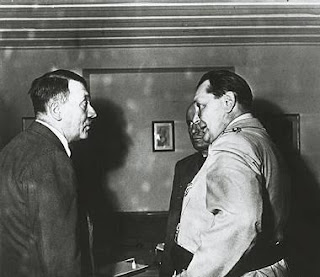 Reich Marshal Goering struggled to remain relevant in the American campaign. When the Fuhrer had first declared war on the United States, the Reich Marshal hadn't realized the consequences of that action.
Reich Marshal Goering struggled to remain relevant in the American campaign. When the Fuhrer had first declared war on the United States, the Reich Marshal hadn't realized the consequences of that action.Naval power was essential for both supplies across the Atlantic and to ferry troops for the planned invasion. Grand Admiral Raeder received more and more of Hitler's attention as the campaign's planning progressed pushing Goering to the periphery; a place he was not used to. There was also animosity between the two men over the Graf Zeppelin. Raeder had managed to create a naval aviation arm; something Goering viewed as an invasion of his field. That this man might now garner Hitler's attention completely away from him was too much.
Goering was quick to offer his own opinions on the planned invasion. Yes, initial naval strength would play a part but the length of the supply line and its continued vulnerability to America's Atlantic Fleet made it seemingly untenable. The Reich Marshal offered a solution. Airfields could be built on Iceland and Greenland and, once Rommel's forces landed, more fields could be built or seized in Canada. These airfields could then be used as an additional supply line, a Luftwaffe artery which could carry men and materiel through the air much more safely and at a fraction of the time. These airfields could resupply Luftwaffe craft on their long trek while longer ranged aircraft was in the works. Goering stressed the positives of his ideas: faster build-up, less risk, and proven via Operation Wotan.
Hitler liked the idea of a second supply line, especially with the enthusiasm it generated in the Reich Marshal. The Fuhrer thus planned for the initial wave of invasion to be naval to be supported by, and possibly superseded by, the Luftwaffe's air supply.
Raeder and Goering eyed each other wearily.
SOURCE: Groening, Oskar The Reich Marshal


No comments:
Post a Comment